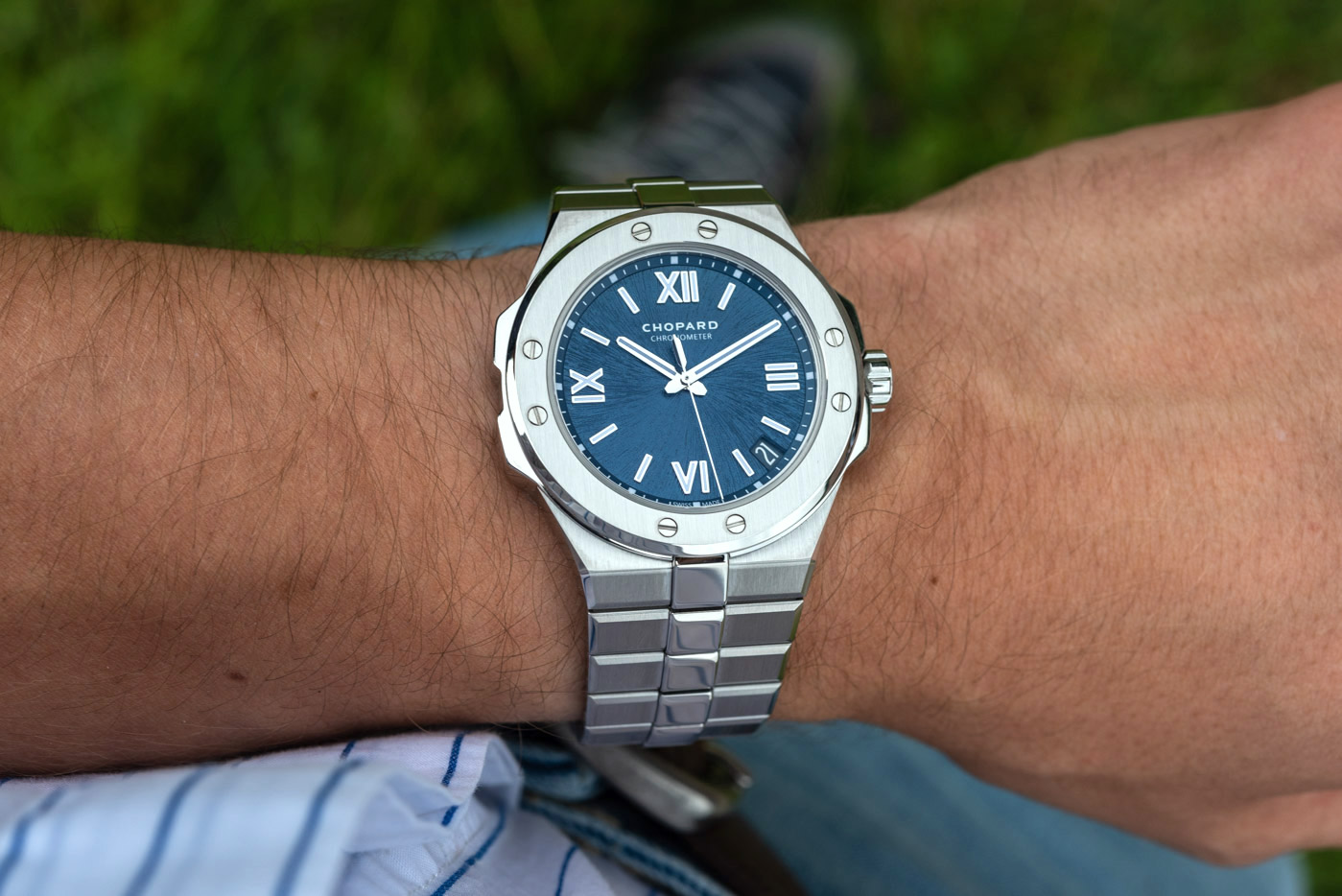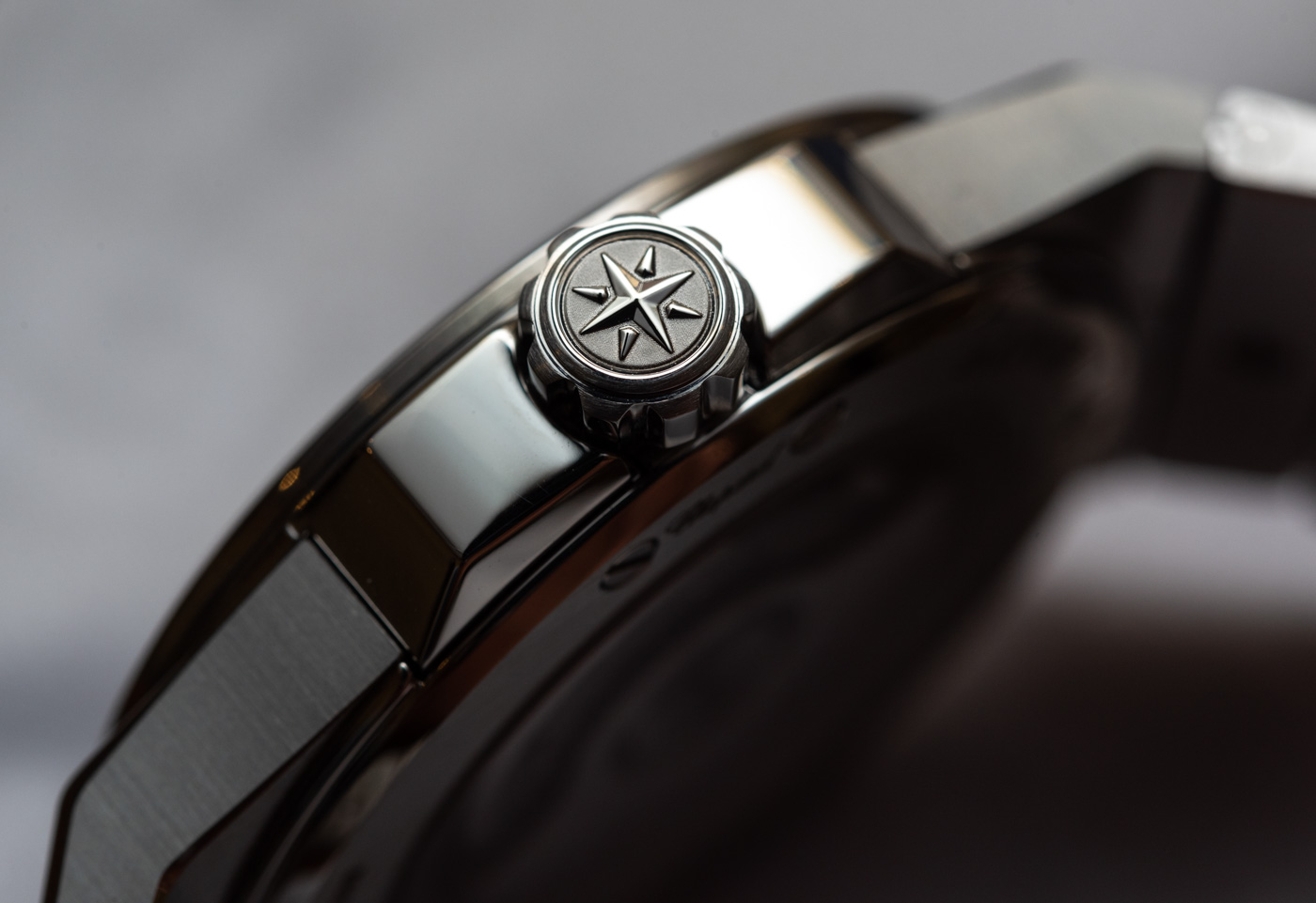
There are two additional benefits of the double-forging process. First, Chopard’s Lucent Steel A223 is, as its name implies, harder than normal steel with a Vickers hardness rating of 223 standing against standard 316L stainless steel’s ~150 Vickers rating. Second, it is steel that is truly incredible in its whiteness and brightness — so much so that, for the very first time in seven years and around 90,000 images of watch photography, I struggled with the reflectivity of the steel case and bracelet of a luxury watch.
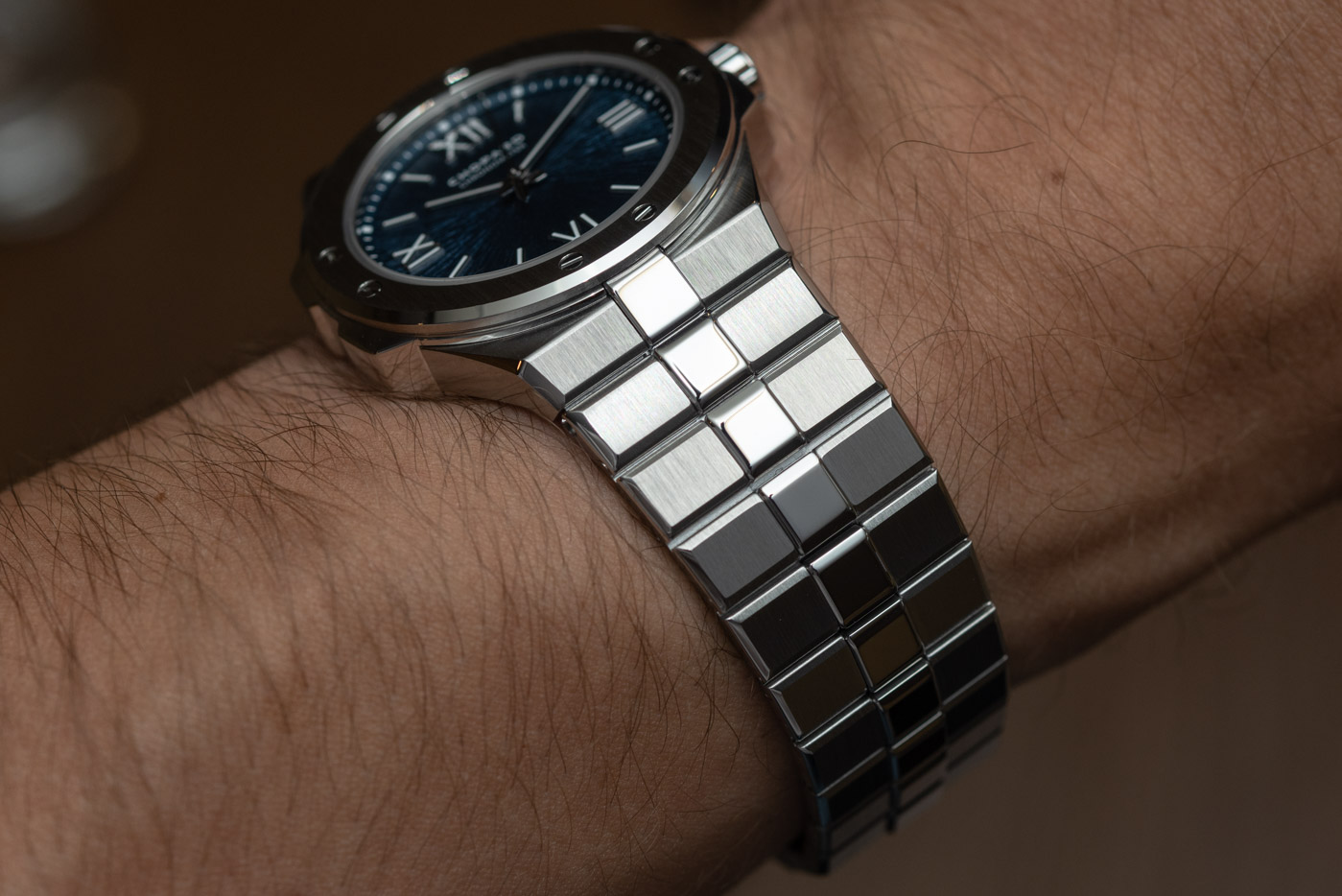
If you see my images as darker than usual, that is due to the adjustment I had to make to compensate for the brightness and whiteness of Lucent Steel. I have never seen anything like it — not with Rolex’s 904L steel, with AP or Patek, nor anywhere else. Both its immaculately white, yet rich color, as well as its tendency to glow, will evoke something along the lines of, “Now, that’s what a luxury steel watch should look like.” Even from total newbies with an untrained eye, the quality and outstanding appearance of this material are immediately apparent. It is important to note that neither the bright glow nor the lack of its inherent color looks cheap — on the contrary. Just look at the remarkably even glow and orange reflection on those two outside links, pictured below. Stuff like that doesn’t happen by chance or by mistake; it only happens with top-tier surface treatments.
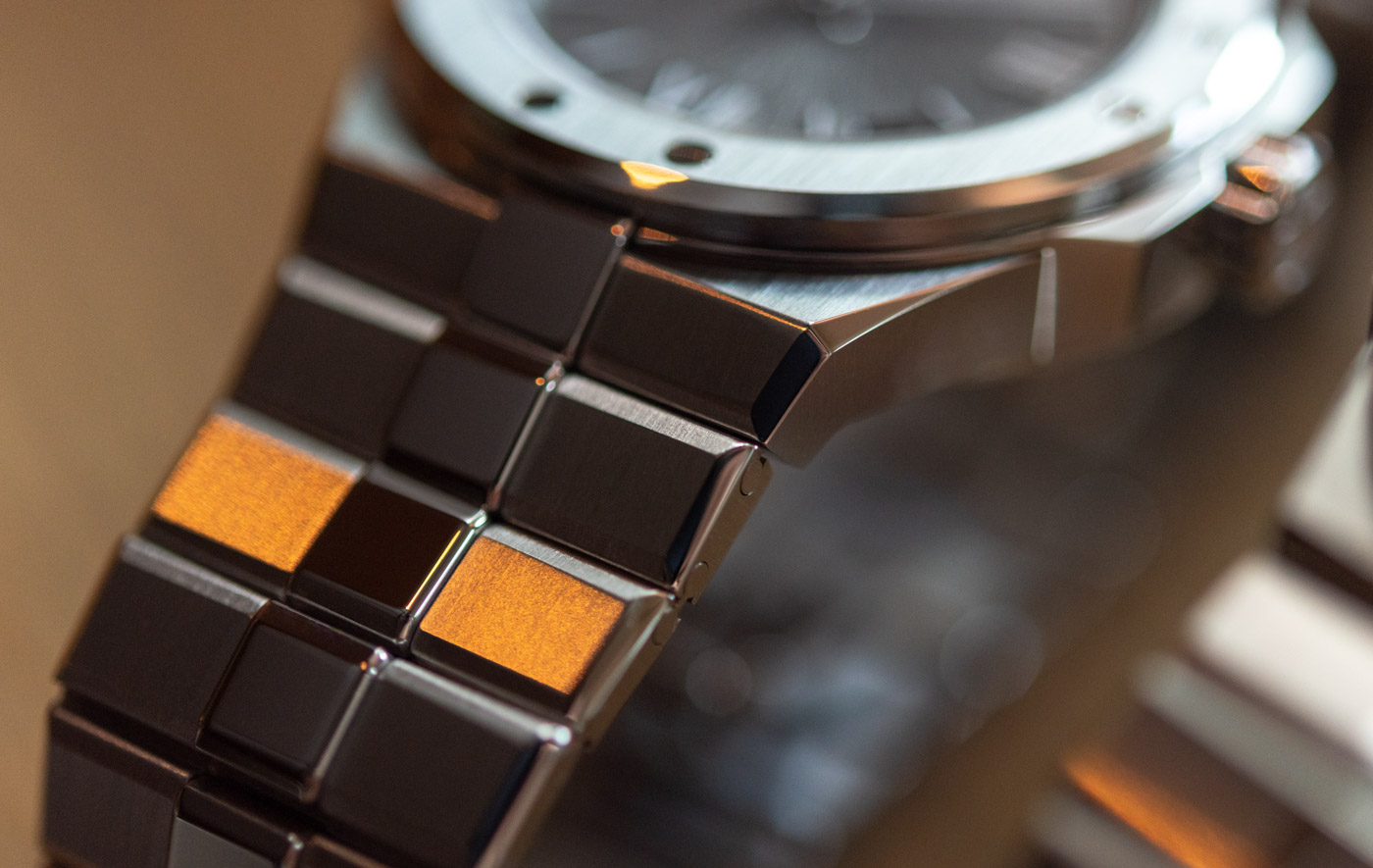
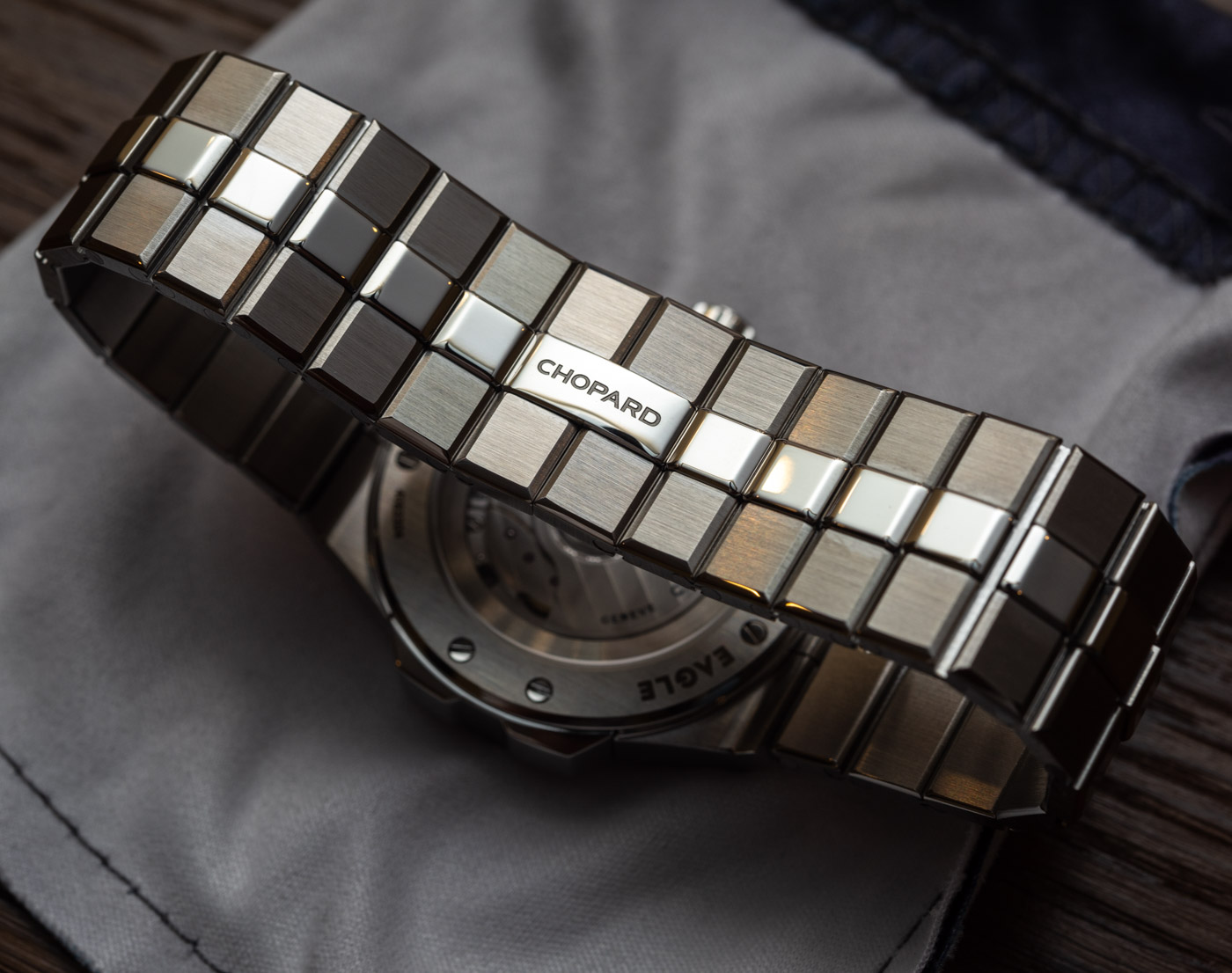
One need not be a doctor of engineering to know that the harder a material, the more difficult it is to work with. (Sure, making a quality watch case out of marshmallows would be an equally tough challenge, but I’m sure you get what I mean.) In watchmaking, though, such an attribute often translates into yet more beautiful and peculiar surfaces that can be crafted from it. Chopard’s engineers were, according to the product launch presentation, on the verge of giving up on this material for months (and I guess also kicking out the doors of their Fleurier-based factory while broadcasting all sorts of French expletives) — that is how many mechanical (and nervous) breakdowns they had to endure during the process of making Lucent Steel as pretty as they knew it could be. A glimpse at the bracelet indicates that their hard work paid dividends in the shape of the sublimely flat and evenly brushed surfaces, as well as in the deep glow of the beveled edges and polished center links.
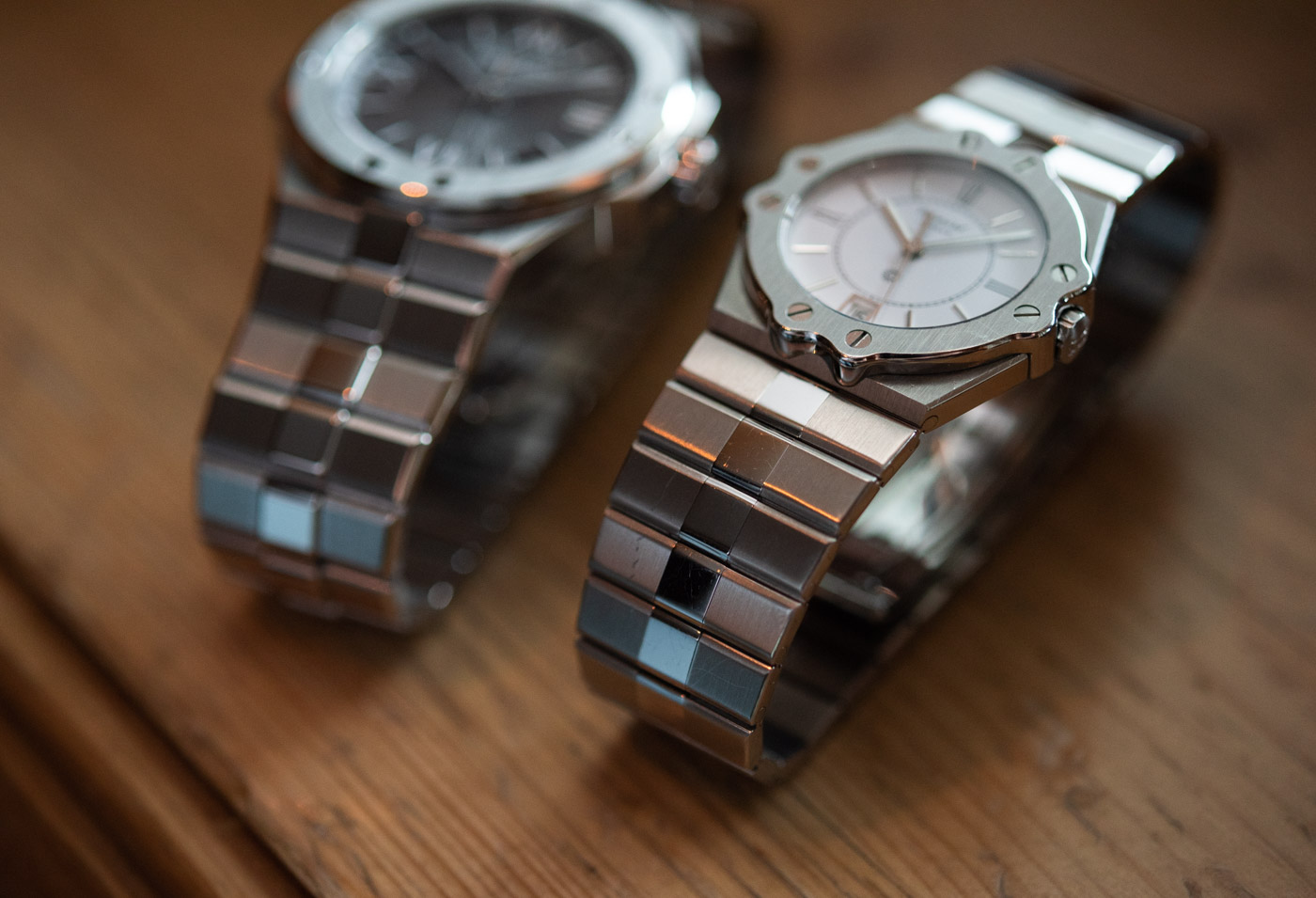
Design & Wearability Of The Chopard Alpine Eagle
The design itself is based on Chopard’s 1980 St. Moritz collection. In line with the times, even today’s 36mm version is wider and thicker than the original — but neither it nor the 41mm variant feel or appear cumbersome, or come across as being large for the sake of being “sporty.” The three-link bracelet looks unchanged in its layout but is, in fact, different in most every other aspect: the links are still held together by eight-shaped pins that allow for a welcome combination of rigidity and flexibility. The center links are raised, as opposed to being flush like they used to be on the 40-year-old original, and the integration between bracelet and lug structure now includes a much more complex lug design, thanks to the latest advancements in case manufacturing. It is only with multi-axis CNC machines and sophisticated tooling that such a raised and angled design and alternating finishing could be achieved.
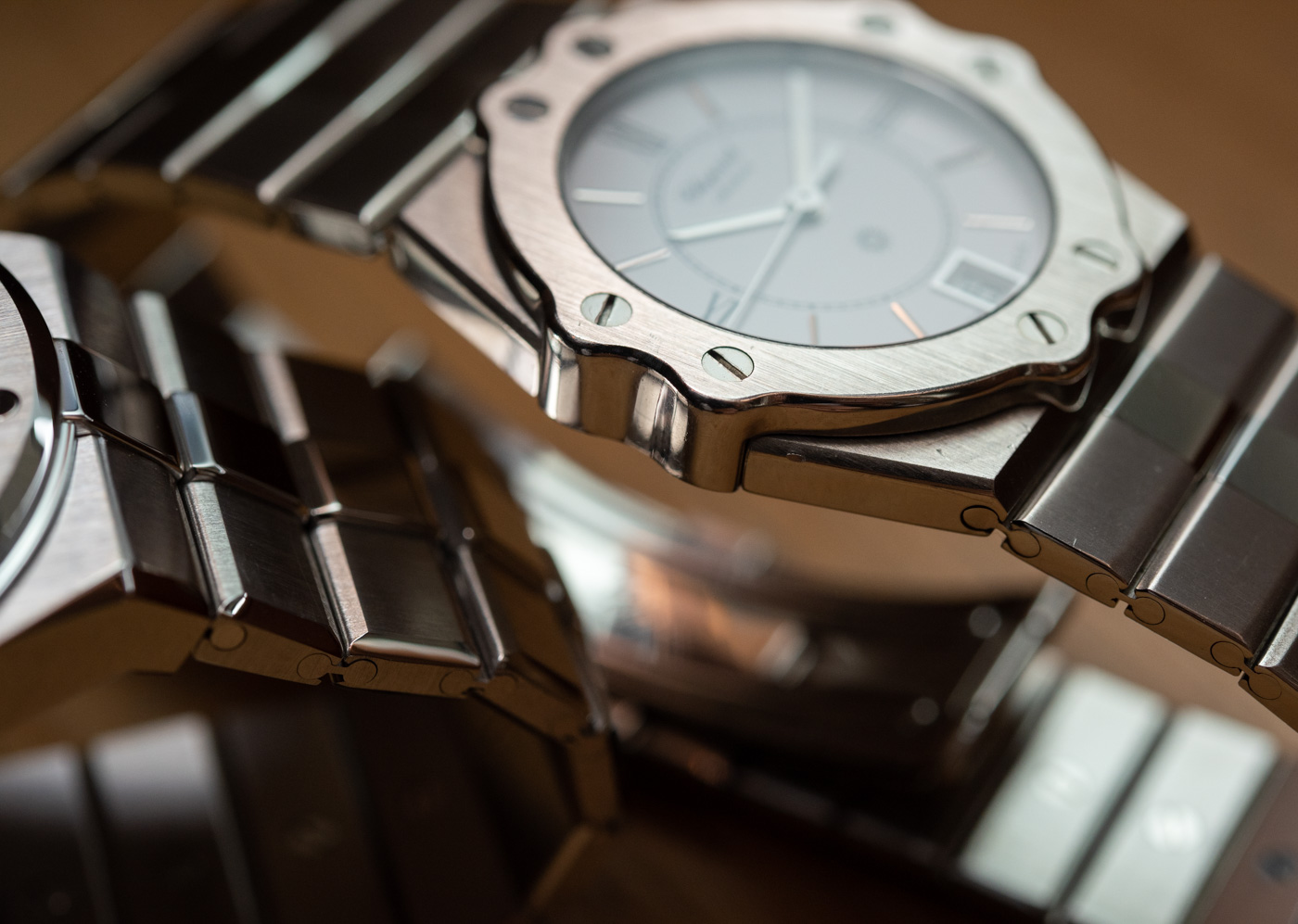

The flow of the original bezel and case profile remain intact, albeit the latter is rather more blocky on the new model to support the larger side. Some of the flower-like delicacy and playfulness of the original is lost on the new design, which I wish weren’t the case. Then again, this more angular and structured look is exactly what the market wants from a 41mm-wide luxury sport watch today. It is just that my gut instinct is telling me that public tastes will continue to merge back toward the more lighthearted and airy designs of the ’80s, of which the original St. Moritz is such a nice and likable example — but in the here and the now, the Alpine Eagle is right where it has to be to sit right with as wide an audience as possible.
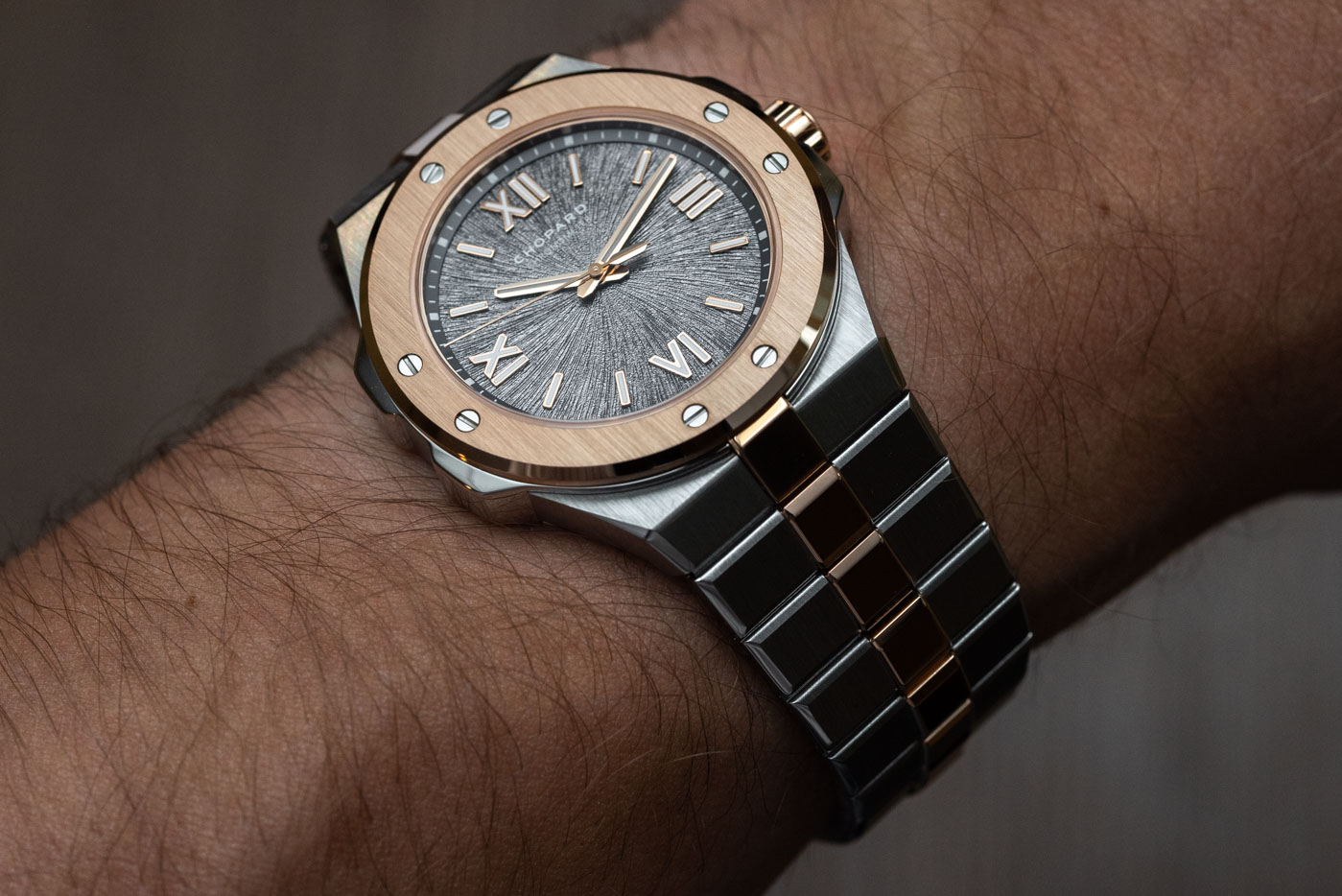
A fun detail — and a testament to the detail-oriented approach of Chopard’s management that I praised above — is how Chopard went through the trouble of designing the functional screws of the case and bezel in such a way that their slots line up with the flow of the bezel. So, yeah, what Hublot had not bothered to get done, and what AP achieved by smarting its way around the problem, Chopard managed to find an engineering solution for. Reading this, you may be in one of the two following groups: a) the misaligned screws in Hublots (and other watches) never bothered you, or b) you consider them the antithesis of good luxury watch design. If you are in group a), you may disregard this paragraph — but the rest of us won’t be holding back a nod of approval in appreciation of Chopard’s attention to detail.


Long-term wearability remains for a Wrist Time review to determine. For now, all I can say is that the narrow links easily follow the shape of a wrist as narrow as mine but, with their eight-shaped pins, they also have enough rigidity to not feel floppy or cheaply made. The double folding clasp is fully hidden underneath the center couple of links of the bracelet; opening it requires just enough force to feel secure, without being cumbersome. The cases of both versions are thin enough to allow for sleeves to slip over the watch — it is rare that I struggle with sleeves crawling over luxury sport watches when taking photographs, but alas, that was the case here.
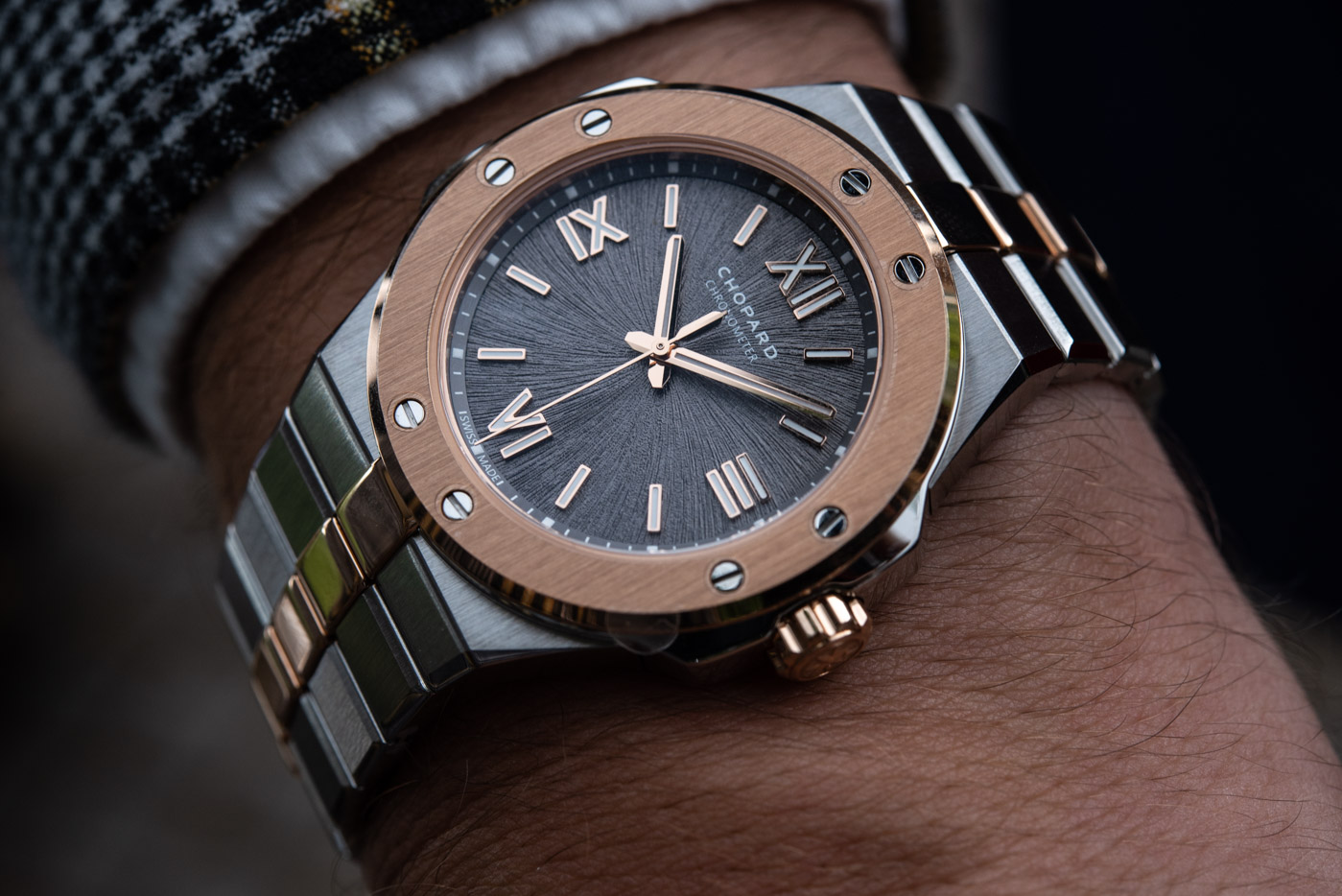
The 41mm-wide version wears noticeably smaller than that size would suggest. It wears smaller and appears more proportionate than the Datejust 41, for example. Therefore, this version has the presence of a 41mm watch paired with the elegance and restraint that radiates from something like the original Royal Oak that was 39mm-wide. The proportions are bang on with both models, so much so that there is nothing I would want to see changed about the bezel, case, bracelet, or dial sizes — a rare feat, especially when it comes to proportions.
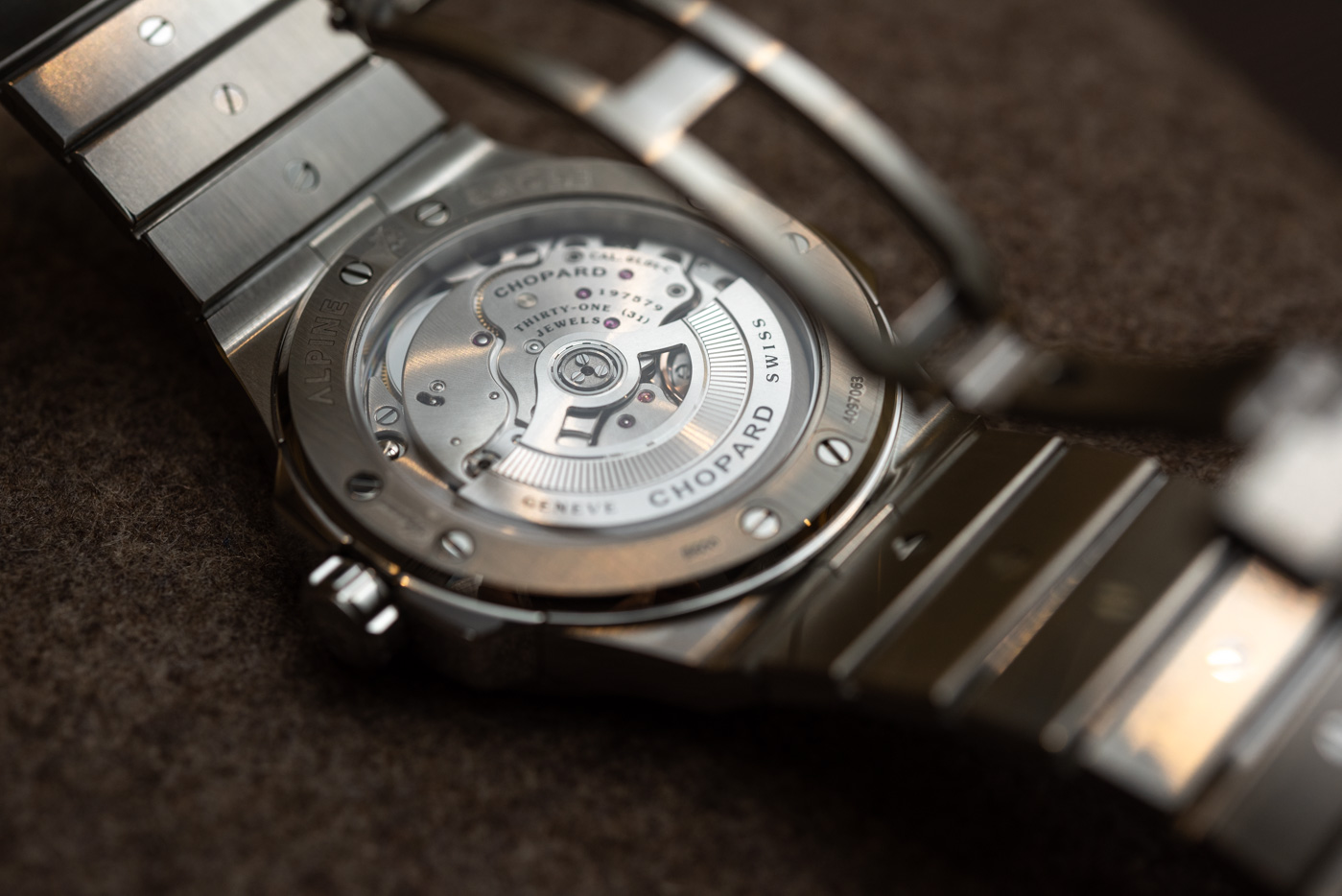
Fully In-House COSC Chronometer Calibers
Both sizes and every variation within the Chopard Alpine Eagle line come equipped with in-house produced automatic calibers. Both movements in all watches are COSC chronometer-certified across the entire range. The larger version sports the Chopard Caliber 01.01-C, a properly in-house movement with a modern 4Hz operating frequency, 60-hour power reserve, and a blend of industrial finishing techniques and traditionally shaped bridges and plates. It measures 28.80mm-wide, filling up the 41mm case of the larger Alpine Eagle nicely.
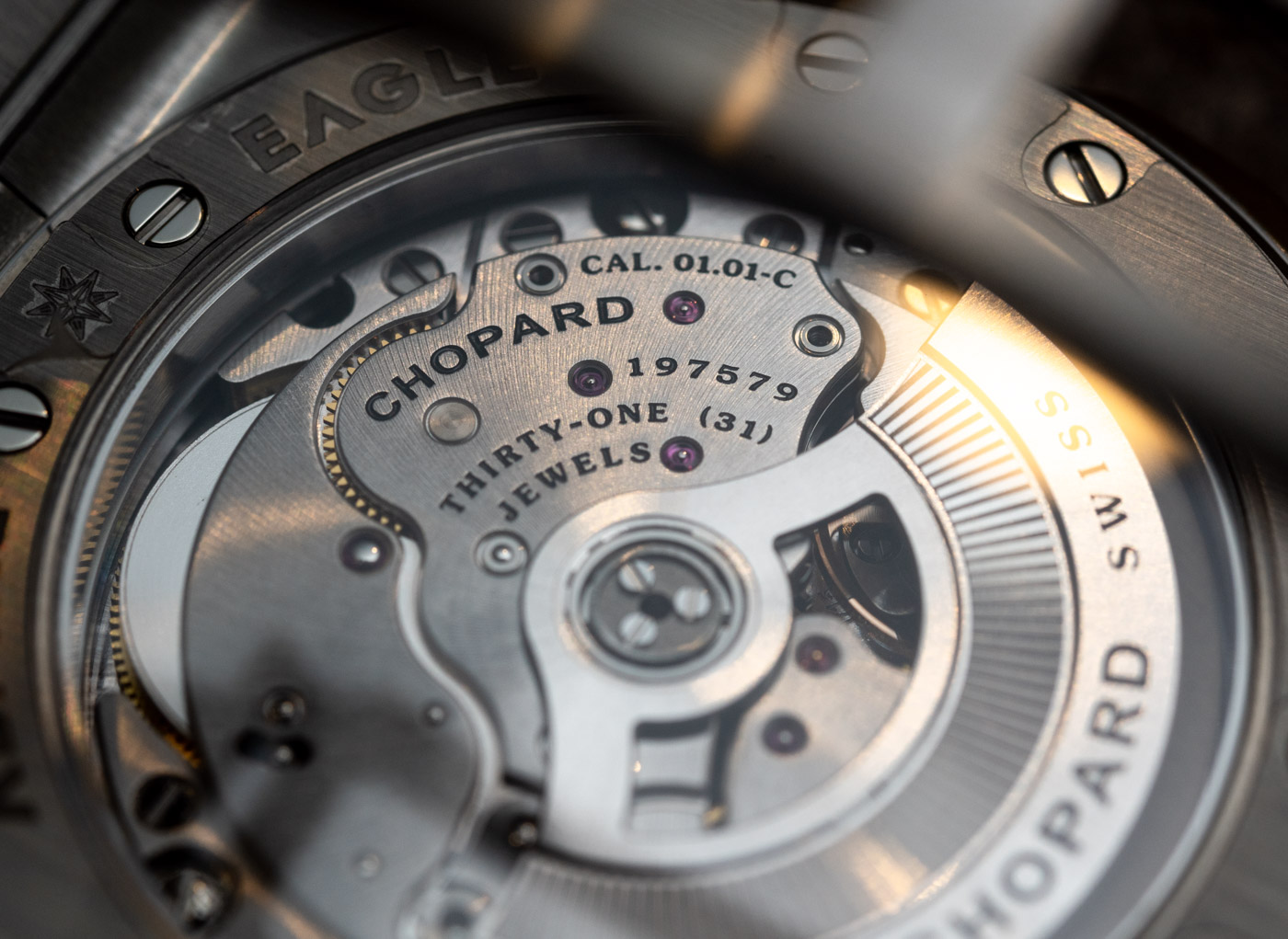
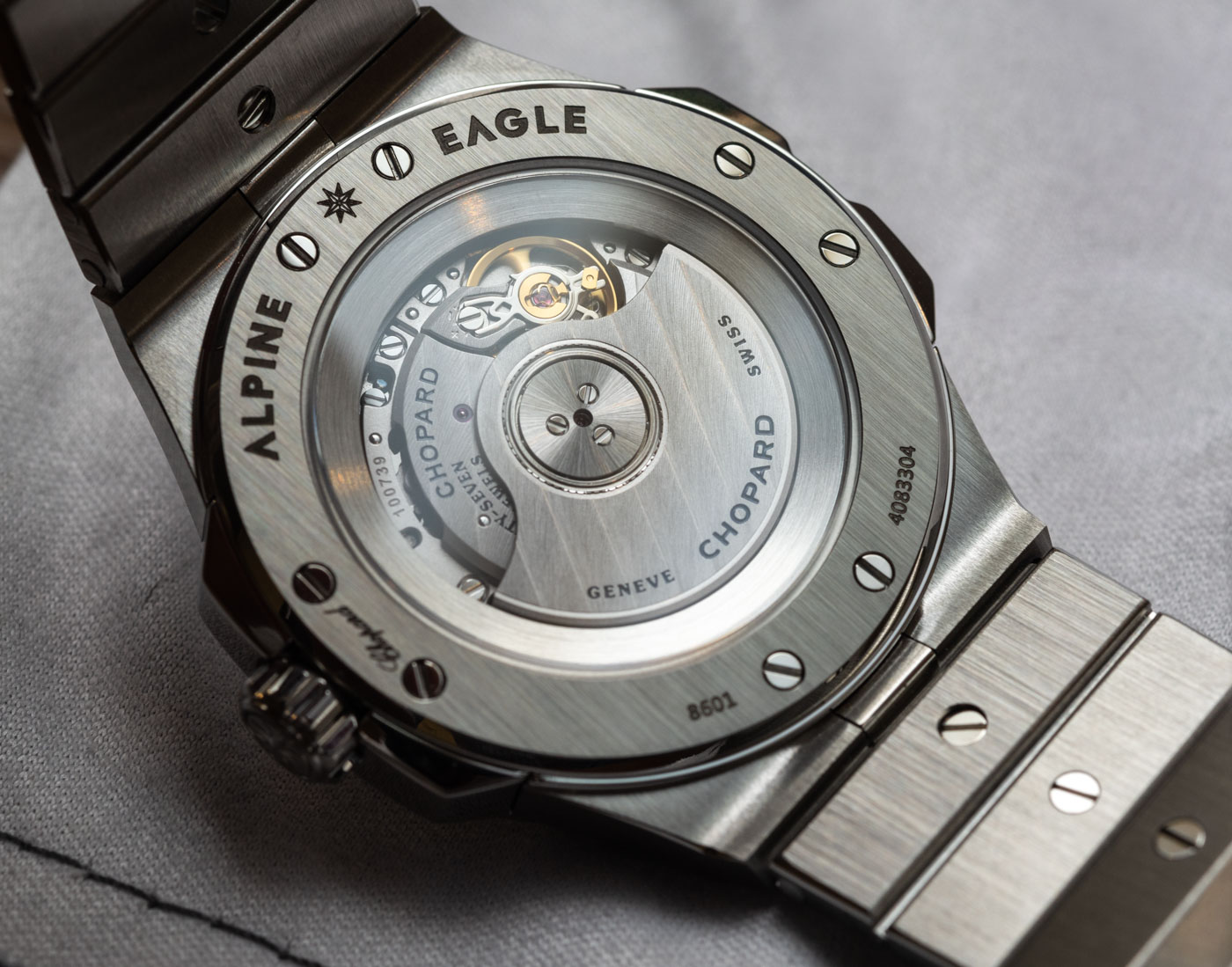
Powering the 36mm Chopard Alpine Eagle watch is the Chopard Caliber 09.01-C, as seen directly above, also produced in-house at Chopard’s Fleurier Ébauches manufacture. It runs at a frequency of 3.5Hz (25,200 vph) and matches a 42-hour power reserve with its compact architecture and 159 component count. This one clearly is a caliber designed around the proportions of base ETA calibers to allow Chopard to substitute supplied movements with its own without having to re-engineer its established cases and dials. With its ball-bearing set rotor and neatly labeled bridges, it aptly matches the surface decoration details of the caseback and bracelet. Such attention to detail helps deny the idea that a simple movement was swapped into the women’s model on a “that’ll do” basis.

